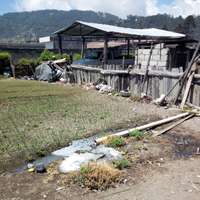
Figure 13. Grey water outlet. Quetzaltenango, Guatemala. Source: Robert Walle
Using water from showers, sinks, and clothes washing, known as “grey water,” for watering plants is a common practice for both food and ornamental crops. Using grey water helps save potable water for other uses or provides water for plants in times of water scarcity. If possible, dilute and filter grey water, passing it through sand, gravel, or mesh to remove solid particles. See Yarger and Berkelaar (2005) for more design ideas such as oil/grease traps and biological filters. Before use in drip irrigation systems ensure proper filtration and examine the in-line water for precipitates. Grey water could contain pathogens and is therefore best suited for crops such as forages and ornamentals that will not be eaten by humans or food crops with peeled skins (e.g., bananas). Grey water is often discharged to flow alongside or through fields (Figure 13). Avoid applying too much grey water that may cause surface puddling.
Grey water may contain nitrogen (N) and phosphorus (P) that favor plant growth. Sodium carbonates and sulfates have replaced phosphates in detergents for environmental concerns.3
Grey water is typically alkaline and can affect pH and the availability of certain nutrients in the soil. The nutrients affected by alkaline pH are iron (Fe), manganese (Mn), and zinc (Zn) and P. You may see deficiency symptoms (similar to toxicity symptoms) such as yellowing of the leaves (starting between the veins, with the veins remaining green), browning and death of the tips and margins of the leaves, and reduced growth.
Types of salts found in grey water depend on the composition of substances used in the sources and the properties of the water itself. Grey water will probably contain sodium (Na) and magnesium (Mg). Sodium is frequently present in detergents and soaps as both NaCl and NaSO4. It can build up in soils, having a negative effect on plant growth. Sodium buildup can disperse clay particles, leading to poorer soil structure, decreased water infiltration, and possible waterlogging.
When discharging grey water, check plants for general sodium toxicity symptoms. These include wilting and burning (browning) of the tips and margins of leaves, stunted growth, yellowing of leaves (chlorosis), reduced production and flowering, and a slight taste of salt. Treat grey water by passing the flow through organic matter where salts can begin to precipitate and try to vary the discharge or disposal sites to avoid accumulation.
References
Singh, D. 2018. Eutrophication in Water by Detergents. International Journal of Advanced Research in Arts, Science, Engineering & Management (IJARASEM), Vol.5(1). ISSN 2395-7852
Yarger, L. and D. Berkelaar. 2005. Gray water and crop irrigation. ECHO Development Notes no. 88.